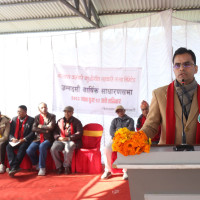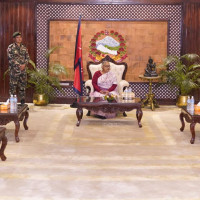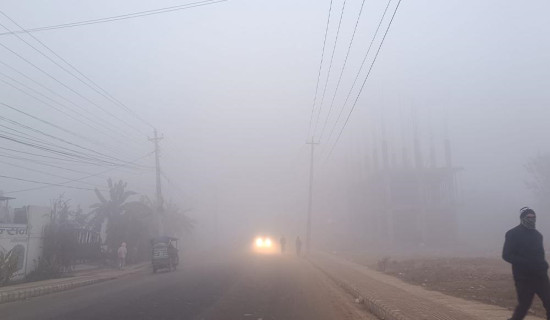- Sunday, 28 December 2025
Thangka Painting: Art And Trade Aspects
Thangka, tangka, thanka, or tanka are the words that come from ancient Greece meaning power or wealth. Today, thangka is a Nepali and Tibetan painting style. The picture is painted on cloth and wrapped with a silk cover. The art form is said to have started in Nepal in the seventh century. From the 14th century, it was influenced by Chinese art. Thangka painted in Newari style is now called the paubha. However, thangka is thought to be of Nepali origin through Princess Bhrikuti who married Sron Tsan Gampo, ruler of Tibet. Because they could be carried easily, thangkas were used by nomadic monks of Tibet. They are used for educational and spiritual purposes with lamas or gurus explaining the topics on the holy artwork. The artistic and aesthetic value and the sales of the art style has increased especially through touristic and religious trade over the years.
Thangka paintings are used to teach students and monks about the features of Gautama Buddha, historical events, mandala, portions of the path towards nirvana, used for meditation and penance, and myths. They act as mediums through which prayers and wishes are made. They are exhibited during Lhosar and other festivals for general viewing.
It is said that Gautama Buddha's most important patron, Anathapindika, married his daughter to Sri Lanka and she was gifted with many jewels. Anathapindika thought that a figure of the Buddha would be something special to give. He sent artists and, with the Buddha’s permission, made artwork of him but felt that they were not able to outline his figure correctly. Buddha's brilliant rays of light had to be dimmed so the artists could capture his image looking at the reflection in water of a lake.
Painting process
The most used colors in thangka paintings are red, white, blue, green, and yellow. Silver and gold metals are also used. The green color is used to indicate nature and compassion. It is believed that monks would stay in caves isolation for weeks and months to make a thangka. Their creations are said to influence the very atmosphere where the thangkas were placed, reflecting peace, wisdom, anger, or happiness as the monk wished to generate.
Now thangka painting has turned into an industry. Price variety of thangka is wide and it takes good knowledge to choose what is most appropriate for the buyer’s needs.
Brush tips of animal hair attached to wooden pieces are used in thanka painting. Pigments may come from walnut, indigo, coral, malachite, sapphire, pearl, and gold if the traditional system is used or they may come from the stationary suppliers in the form of poster or fabric colors. The process of painting thangka is very important and completing a work may take from hours to months and even years depending on the size and complexity of the painting. The cost of production can, therefore, vary and accordingly. Preparation of the canvas, formation of baseline drawings and patterns are worked carefully.
According to the Tretyakov Gallery Magazine, for the 108 lords of the Dzogchen Lineage Thangkas Project, a leader of a thangka painter, Kalsang Dorjee, was the head of a company of 15 from Tibet, India, Bhutan, and Nepal. Kalsang Dorjee of Kham in Eastern Tibet practiced the art for 15 years. Silk thangka is made of colorful silk which was cut into various patterns and glued to the fabric. Silk embroidery, showing a Buddhist god, a famous scene, or a mandala can take the woven form. Thangkas can last for a very long time. Much care is taken to store them.
Thangka trade
Thangka painters can easily earn Rs. 10,000 or above depending on their skills and the level of difficulty required in a work. An original thangka painting can cost anywhere from $20 to $15,000. The cost depends upon its size and the quality of the work. An artist works up to eight hours a day or more and can be busy for more than five months to complete a painting. These painters are especially busy when there is tourist peak season and when export orders are high.
Among the countries that import thangkas from Nepal are the USA, Britain, India, Canada, Germany, Japan, Italy, France, Australia, Netherlands, and China. The handicraft industry within which thangka falls, employs a large number of craftspeople and artisans and makes a difference to the livelihoods of many.
(Shila is a student and she writes on art.)
















